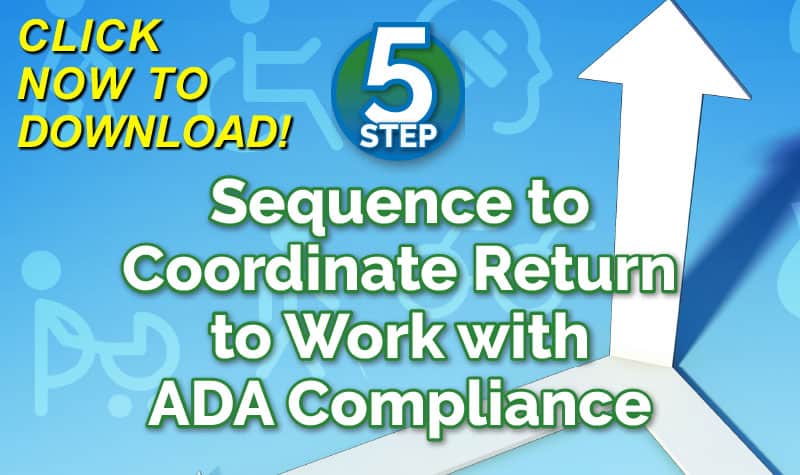Workers’ Compensation Costs Can Be Reduced by Implementing Operational Best Practices: Learn How With This New Guidebook.
A company that wants to implement a new workers compensation program or revamp an existing system will find this book helpful. Maybe your company has recently expanded and you realize the need to train a workers compensation manager or regional coordinators how to hold down compensation costs. Whatever your need, here is the answer: Workers Compensation Management Program: Reduce Workers’ Comp Costs 20%-50%.
Used by more than 150 firms across the country, this is THE book to help every employer develop a more effective workers compensation program to reduce workers compensation costs. It is based on field research and decades of experience in workers compensation from all aspects of the business. Best practices are described in detail for each person in the injury process.
This easy-to-read manual has been updated for 2012. It now includes:
An index for quick topic look-up so you can view a term or a procedure and see all relevant references.
NEW – Workers Compensation Basics
Purpose of Workers Compensation
Who Pays for Workers Compensation?
Parties Involved in Workers Compensation
Benefits for the Employer
Independent Contractors
Benefits for the Employee
Injuries Covered
Types of Workers Compensation
How Losses are Categorized
How Losses are Reported
Calculating Your Premium
How Mod Effects Your Premium
Good/Bad Mod Example
Five Ways to Reduce Your Mod
NEW – Fundamentals of Cost Containment
Reasons Workers Compensation Costs are High
Who is in Charge?
Work Ability Form Properties
Who is Responsible for Managing Workers Compensation Claims?
Who is Responsible for Managing Workers Compensation Process?
Hidden (Indirect) Costs of Workers Compensation
Additional Costs
Calculating WC Costs
External Obstacles to Cost Control
Internal Obstacles to Cost Control
NEW – Working with Your Adjusters or TPA
Account Handling Instructions
MD Participation
NEW- Reporting a Claim
Critical Issues
Essential Intake Considerations
Nurse Triage
NEW- Directing Medical Care
Occupational Health Clinics
Remote Health Services
Directing Medical Care in California
NEW- Return to Work
What to Include in a Transitional Duty Policy
Non-Profit, Volunteer or Charitable Positions
Employees Who Never Return to Work
Coordinating WC with Federal and State Leave Statutes
NEW – Other Indemnity Cost Containment Services
Telephonic Disability Intervention
NEW – Medical Cost Containment
URAC Certification
Mental Health RNs
Chronic Pain Programs
An Aging Workforce
At Home Recovery Services
Medical Fee Schedules
Fee Schedule Coding
ICD-9 and CPT Codes
NEW- Physical Therapy and Physical Rehabilitation
Differences between Physical Rehabilitation Programs
Pharmacy Benefits Management Program
Authorized Drug Formulary
Toxicology Screening
NEW – Fighting Fraud and Abuse
Medical Terminology Used to Identify Malingering
Reviewing Investigation Reports and Videos
Avoid good Day/Bad Day Syndrome
NEW – Claims Resolution and Settlements
Conditional Payment and Final Demand
Pharmacy Component of MSA
California Settlement Process
A 183-page guide covering how to assess your workers compensation program, design program materials, roll out a program to the organization, and monitor and manage the program once implemented.
Written by a national expert on workers compensation cost containment with over 25 years experience helping companies reduce their losses 20% to 50%.
T. Ronca, a workers’ compensation defense attorney from Long Island, NY, said the book is an invaluable desk reference. “It is one of the tools that should never be out of reach for a risk manager. Direct employer involvement with claims in the first weeks is the difference between success and failure. This manual will guide the conscientious employer through the pitfalls,” Ronca said.
What’s more, the book can be delivered with your company logo on the cover and a full-color ad for your company on the back cover.
Take it out to the field. Text tabs are available to put on each chapter and it is ready to go as your company training manual. All you will have to do is customize the Training Agenda that is in Part I of the book.
Included in the manual are topics such as: Return to work and transitional duty, claim reporting, employee communications, controlling fraud and abuse, directing medical care, medical cost containment solutions, post injury response procedures, reporting procedures, working with your carrier and third party administrator. There is information about physical therapy, pharmacy benefits management programs, training supervisors and gaining management commitment. It also contains concepts of claim settlement and resolution as well as safety and loss control. New areas are identified above.
There are 5 sample worksheets in the manual to help organize an efficient workers’ compensation program. These include: timetable for implementation, the injury coordinator job description, and several sample roll-out letters. We recently received a terrific phone call from a third-party administration firm saying how the manual provided an organized way to train clients at loss prevention and has helped their clients put "layers of better WC management" in place. Everyone benefited.
One large distribution firm wrote to us to say the chapter on safety and loss control led to a company-wide safety change that only cost a few hundred dollars but prevented a specific type of injury that had been draining its budget, says Rebecca Shafer, Esq., President of Amaxx Risk Solution, Inc. who authors the book. Shafer is a national expert on workers’ compensation cost containment with more than 25 years of industry experience helping many companies reduce their losses 20-50%.
When you order your copy of Manage your Workers’ Compensation Program from Advisen at http://corner.advisen.com/wcbooks, the 183-page guidebook shows how to assess your program, design program materials, roll-out a program to the organization, and monitor and manage the program once implemented.
The workbook is also available with a customized front and back cover for bulk purchases. Discounted rates apply to bulk orders.
One company said, "After reading the manual, we took a look at past workers comp practices and saw that every department did things differently. Manage Your Workers’' Compensation Program 2012 gave us the guidance we needed to standardize our workers’ compensation programs across the country. It was like a pre-prepared lesson plan," according to the risk manager.
A regional hospital in North Dakota wrote that, "Our small company expanded rapidly and we actually didn’t have any official workers’ compensation program in place. This manual gave us step-by-step procedures from the first meetings with management to monitoring the final program. Buying and reading the book was almost like hiring another employee – one who was an expert in workers’ compensation."
Who Uses the Workers’ Compensation Book?
Risk Managers and Workers’ Comp Managers find it useful learning about the cost containment niche and use it for themselves and to bringing new team members up to speed very quickly. The book becomes a “lesson plan” tool.
Safety Directors use the book to train supervisors in workers’ compensation claims management. They learn more about their area of responsibility — post loss cost containment — adding to their overall knowledge. They also learn what to do after an injury and what steps are supposed to take place during the first 24 hours.
Brokers use it for prospects, as well as, to learn about specific aspects of cost containment, passing their knowledge on to their clients. For example, when discussing how to develop a return-to-work program and a client asks about, “off-site return-to-work programs,” the broker quickly finds the relevant section in the book, reviews it and passes the answer on to the client, along with a copy of the cost containment book with the broker’s logo.
Adjusters use the book to gain a better understanding of the employer’s perspective. Adjusters also want to learn more about cost containment to add to their overall workers’ compensation knowledge in order to grow their careers and stay abreast of new services.
Account Producers give the book to prospects during formal presentations to illustrate their company is on top of the workers’ compensation industry. The book makes an excellent client gift.
Vendors such as doctors, physical therapy networks, occupational clinics and medical management firms learn how their service might fit into the workers’ compensation marketplace, what is important to employers, and what they look for in medical services to enable the vendors to enter the workers’ compensation marketplace.
The manual is a cost-cutting tool to learn more about systematic and operational techniques for reducing workers compensation costs.
Author Rebecca Shafer, JD, President of Amaxx Risk Solutions, Inc. is a national expert in the field of workers compensation. She is a writer, speaker, and publisher. Her expertise is working with employers to reduce workers compensation costs, and her clients include airlines, healthcare, printing/publishing, pharmaceuticals, retail, hospitality, and manufacturing. She is the author of the #1 selling book on cost containment, Workers Compensation Management Program: Reduce Costs 20% to 50%. Contact: RShafer@ReduceYourWorkersComp.com.
2012 NEW WORKERS COMP MANAGEMENT GUIDEBOOK: www.WCManual.com
WORK COMP CALCULATOR: www.LowerWC.com/calculator.php
MODIFIED DUTY CALCULATOR: www.LowerWC.com/transitional-duty-cost-calculator.php
SUBSCRIBE: Workers Comp Resource Center Newsletter
Do not use this information without independent verification. All state laws vary. You should consult with your insurance broker or agent about workers comp issues.
©2012 Amaxx Risk Solutions, Inc. All rights reserved under International Copyright Law. If you would like permission to reprint this material, contact us at: Info@ReduceYourWorkersComp.com.



























